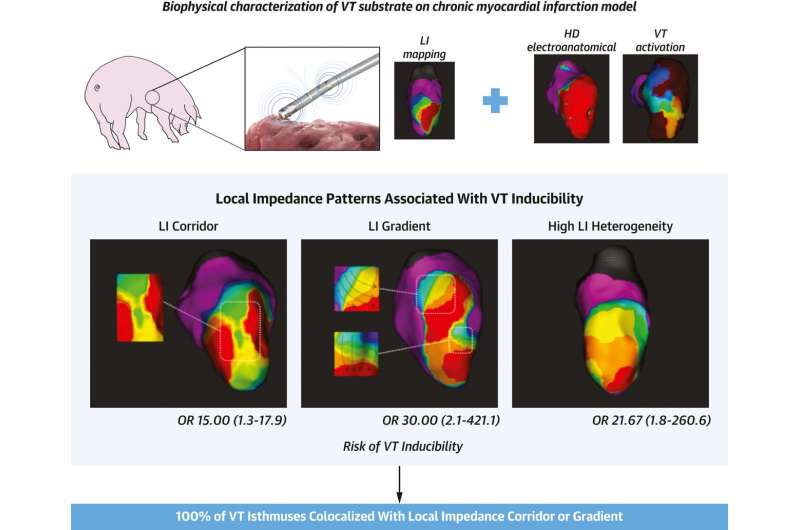This article has been reviewed according to Science X's editorial process and policies. Editors have highlighted the following attributes while ensuring the content's credibility:
fact-checked
proofread
Evaluating local impedance-based mapping to improve characterization of ventricular tachycardia substrate

A study published in JACC: Clinical Electrophysiology evaluates local impedance-based mapping as a tool to identify critical components of ventricular tachycardia after myocardial infarction. The study highlights the technique's potential to improve the characterization of ventricular tachycardia tissues and circuits.
The scientists conclude that the technique is feasible and could improve the results of cardiac ablation. The work, which was performed in an animal model, involved researchers from the Heart Failure and Heart Regeneration Research Group (ICREC) at the Germans Trias i Pujol Research Institute (IGTP), the Heart Institute of the Germans Trias Hospital (iCor), the Autonomous University of Barcelona (UAB) and Boston Scientific.
Cardiovascular diseases are the leading cause of mortality in Spain and worldwide. Specifically, myocardial infarction is the most frequent cause, in which death is caused by a malignant ventricular arrhythmia originating in the post-infarction scar. One of the therapeutic strategies to prevent the occurrence of malignant post-infarction arrhythmias is to perform a catheter ablation procedure, where the scar is treated with radiofrequency to eliminate potential arrhythmia circuits.
However, current results are not always satisfactory and new ablation techniques and strategies must be developed to improve the prognosis of patients.
In this regard, the present work uses a biophysical characterization of post-infarction scar components based on local impedance, which allows reliable measurement of resistive load and tissue composition. Different local impedance values within the scar have been shown to successfully differentiate ventricular arrhythmia circuits, improving their identification and ablation.
Dr. Felipe Bisbal, leader of the research, comments that "the results with a post-infarction animal model are very promising and suggest that this pioneering technique could substantially improve current ablation results."
Future studies for clinical evaluation in humans will be key to determine the reproducibility of the findings and the clinical benefit of the therapy. Technological developments with automation and increased mapping density could help refine the technique and offer new therapeutic targets in patients with myocardial infarction and ventricular arrhythmias.
More information: Júlia Aranyó et al, Biophysical Tissue Characterization of Ventricular Tachycardia Substrate With Local Impedance Mapping to Predict Critical Sites, JACC: Clinical Electrophysiology (2023). DOI: 10.1016/j.jacep.2022.11.023



















